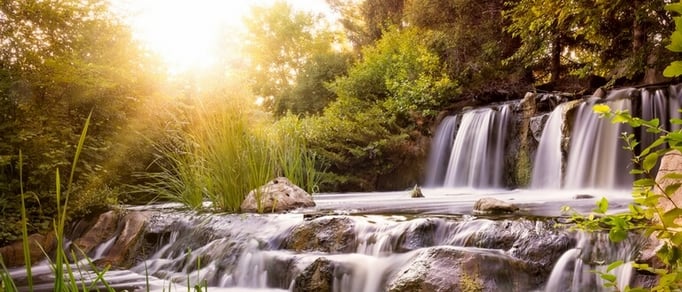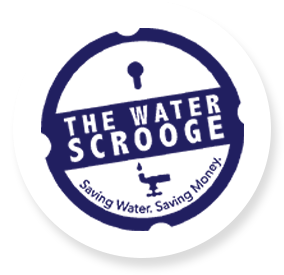3 min read
The Shocking Cost of Running Toilets in NYC Apartments
![]() David Schwartz
Aug 25, 2016 9:00:00 AM
David Schwartz
Aug 25, 2016 9:00:00 AM

The crashing of ocean waves. The babbling of brooks. The pitter-patter of rain on a tin roof.
For many of us, the sound of running water soothes like little else can. But we can all readily agree, the sound is
anything but calming when it's coming from our toilets' tanks. According to the American Water Works Association, an estimated 1 in 5 toilets has a leak at any given moment. The culprit?
More often than not, it's an intermittently running toilet that has either a). Not yet been identified or b). Isn't seen as a cause for concern. But anyone who likes saving money should be concerned. Running toilet water wastes about 25 times more water than a shower leak and 4 times as much water as a simple faucet leak. As you can imagine, the cost of such wastefulness significantly adds up over the course of a month, let alone a calendar year.
How Much Is This Really Costing Landlords?
According to the City of New York, where the cost of water has risen 200 percent over the past decade, a running toilet with a medium leak will typically waste 250 gallons per day, costing over $100 a month. Got an open-fill valve? That can waste up to 4,000 gallons per day, costing about $1,350 a month.
If you own a multi-family building that contains 800 toilets, you can assume 160 of these have an undetected leak RIGHT NOW. That translates to $13,120 down the drain, assuming they all have medium sized leaks, and tens of thousand dollars more if any of them have high-volume leaks. You may be wondering: How does this happen? And how can I catch these leaks before they start?
Let's keep going...
The 'Not So Mysterious' Cause of Running Toilets
Toilets operate off gravity – meaning, when you push down on the lever it lifts up a rubber flapper, allowing water to run out of the tank and into the bowl. Once the water in the tank runs out, the flapper closes and allows the tank to refill. The tank water then slowly rises until a float closes the intake. The problem?
Toilets are originally calibrated in dry, factory settings. As such, the parts within the tank are subject to changes over time, due to water pressure, mineral deposits and natural aging. Each year a toilet is in operation, its internal components are becoming less and less efficient. The good news is all of these issues can be easily fixed once identified. Here are some of the most common causes of a running toilet:
- A damaged or warped flapper that is no longer providing a water-tight seal on the flush valve.
- A flapper, trip lever or chain that has lost alignment with its flush valve and created a gap.
- A flush valve that has developed small cuts, causing leaks between it and the flapper.
- A "stuck" open fill valve that is causing water waste as it flows down the overflow tube.
How to Easily Identify Running Toilets
- Insert a couple drops of food coloring into the tank.
- Avoid flushing the toilet for 20 to 30 minutes.
- Check for color in the bowl. See color?
- You've got a running, leaky toilet!
Although testing for toilet leaks is simple, landlords of large, residential buildings still face an annoying problem: How can you efficiently check ALL of your units for toilet leaks, when their malfunctions don't conform to any kind of schedule? Even if you scheduled an annual leak check of all unit toilets, several toilets that initially appear fine upon inspection may begin leaking the very next month!
How to Pro-Actively Find Leaks (and save)
1. Install 24/7 Wireless Toilet Monitoring
The best way to avoid the frustration of surprisingly hefty water bills is to immediately identify and fix leaks. You can now easily so this with The Toilet Scrooge – an electronic device that monitors toilet fill cycles, flushes per day and times of use. Unobtrusively sitting at the base of the toilet, The Toilet Scrooge synchs to a mobile app, allowing landlords to instantly know when "something is up."
By keeping tabs on potentially malfunctioning toilets, you can fix small leaks and problems before they become big ones. The best part? The device comes with white-glove installation, complimentary monitoring and usually pays for itself within 1 year.
2. Routinely Calibrate Toilets
Do commit to calibrating all toilets once per year. Update old, rubber flappers; reset water flow to the minimum amount necessary and ensure there are no active leaks. If your maintenance staff isn't trained in calibration, The Water Scrooge can walk them through the process free of charge in conjunction with the installation of any of our water-saving products.
3. Use In-Tank Toilet Cleaners with Care
Large tablets made of chemicals and chlorine liquid intended to help keep the toilet bowl clean, can wear away flappers over time. Unfortunately, such wear is often not covered by warranty. The damage caused by in-tank cleaners is often the result of a toilet not being flushed for a long period while a house is empty. Without flushing, the chlorine content of the tank water increases and is more likely to wear away the flapper. Translation: Avoid deep-cleaning tanks in between tenants or during time periods where toilets are unlikely to be used.
As you can see, astronomical water bills don't have to be a part of your life. The Water Scrooge partners with multi-family building owners to create customized water savings plans to conserve water.
Click here to determine how much you could be saving with our water savings calculator
About The Water Scrooge™
The Water Scrooge™ offers water conservation ways and products to multi-family landlords and homeowners, including: shower flow controllers, Leak Detection Systems, Toilet Leak Prevention Devices (The Toilet Scrooge™), water flow management devices (SMART Valve™), toilet calibration and DIY products.
Also featuring The Water Scrooge™ App. Our app empowers your team to carry out the installation of our kits. With it, you can also record and track data points about the units (other than water usage).



